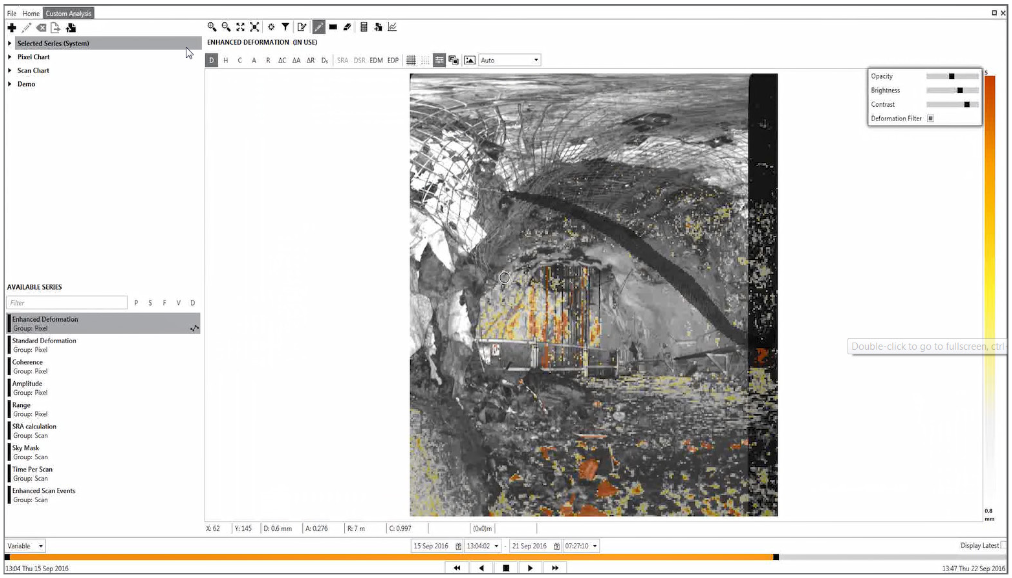Underground environments are very dynamic by nature, with the effectiveness of ground support always changing. Through monitoring, areas of high risk can be identified and rehabilitated in a targeted way. At a large, well-known, hard rock mine in Queensland, Australia, visual inspections on the rear wall of this shaft showed cracking in the shotcrete. On-site geotechnical engineers were uncertain if the entire shaft was moving, if the pillars were moving, or indeed if the entire drive was on the move. The potential for rock falls in this shaft was a safety concern; however shutting down the shaft for rehabilitation would involve shutting down the entire mine which would detrimentally affect production levels.
To help manage the risk, GroundProbe’s GML-Underground was deployed and began monitoring to determine where movement was occurring within this area of concern. “Through the data gathered by the GML’s scans, which were then analysed in SSR-Viewer, it was determined that convergence was indeed occurring in this particular area, predominately around the cracked areas. The data showed that there was linear to regressive movement occurring in the area, but it was certainly on the move in those structurally controlled areas,” said Peter Saunders, Principal Geotechnical Engineer, GroundProbe. The data also proved that other sections of the wall, which were thought to be moving, remained stable.
With this information, the mine site was able to implement targeted ground support in the area, only needing to concentrate their efforts to the areas they knew were moving. As a result, they only needed to close the shaft for the shortest amount of time possible. Following the installation of the targeted ground support the Geotechnical Engineers began to monitor the area again using the GML.
“The results of the targeted ground support could be seen immediately,” said Saunders. “It was effective, targeted ground support that stopped the movement in the area altogether. The appropriate identification of areas most in need of ground support also ensured the stress was not just moved to a different location.”
Operationally insignificant but nonetheless interesting, while the GML was monitoring the area, a small rock fall was detected in the drive near the shaft. The GML detected the movement 45 minutes before it fell. This shows the highly accurate and precise nature of the GML as a real-time, underground monitoring solution for convergence.











